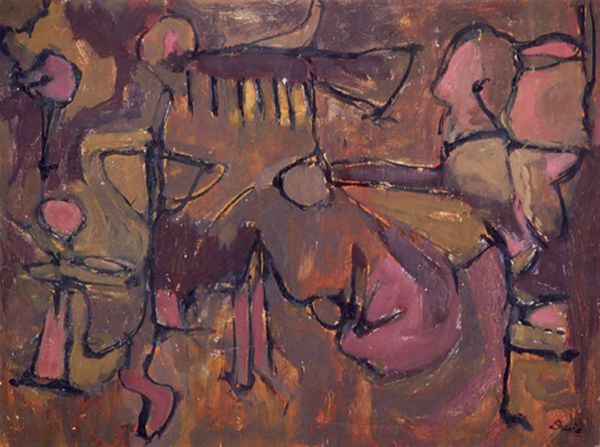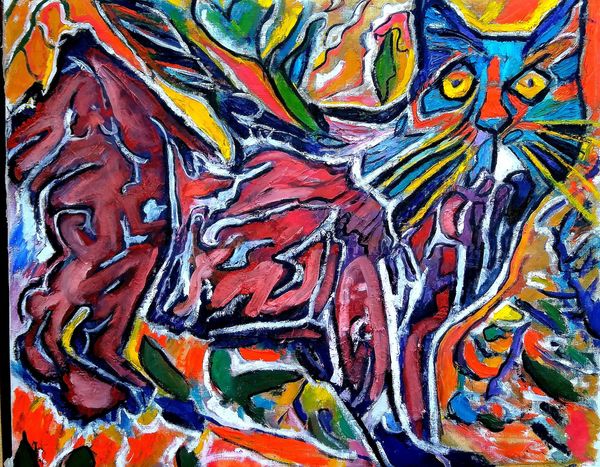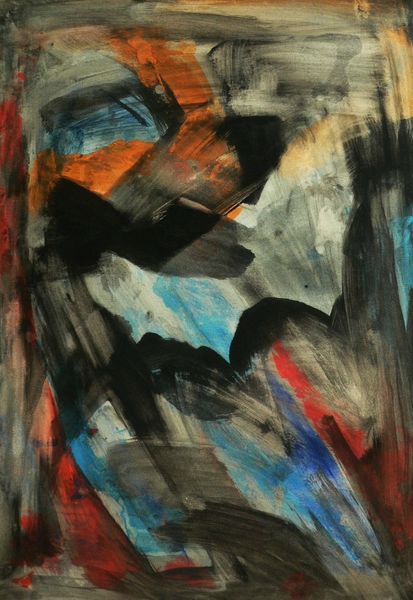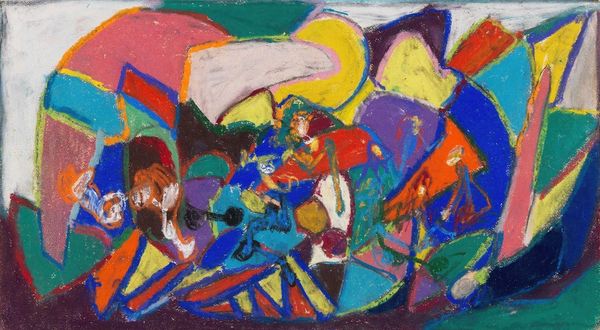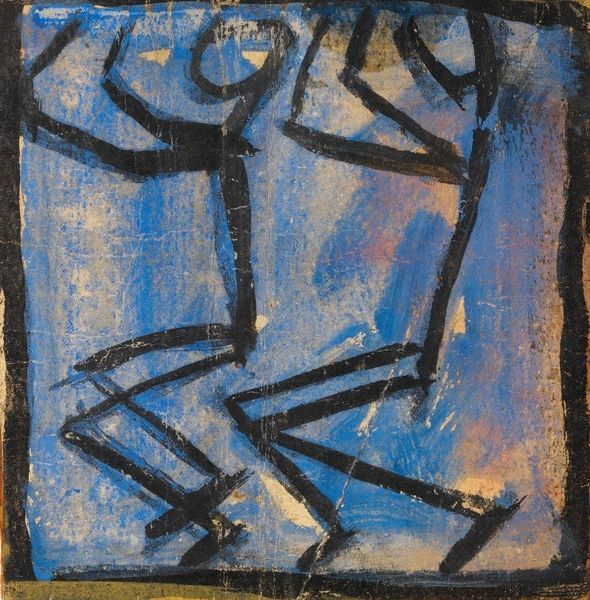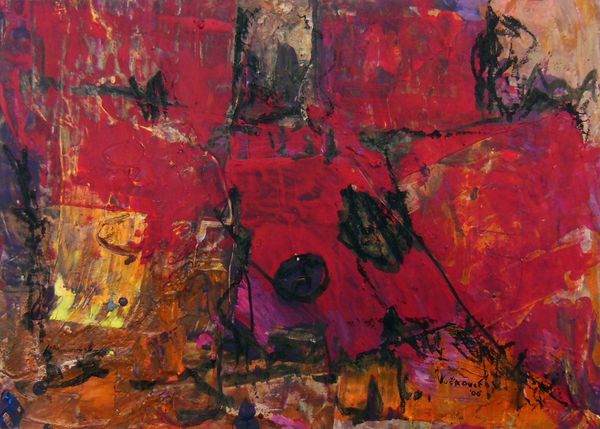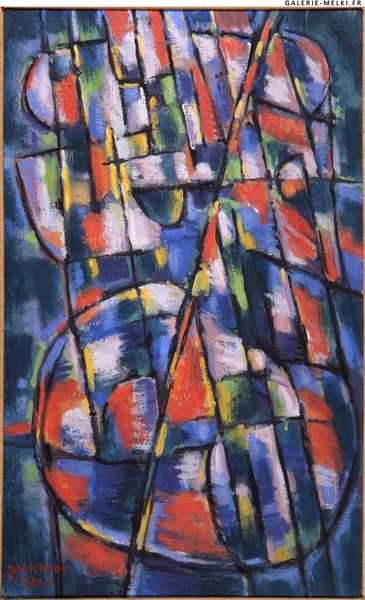
Copyright: Andre Masson,Fair Use
Curator: Here we have Andre Masson's "Games Centaurs," painted in 1961. It’s an oil on canvas piece that blends figuration and abstraction, a hallmark of Masson’s style. Editor: My first thought? Frenetic energy! It feels like I'm eavesdropping on some chaotic dance, full of hidden figures wrestling within the paint. A swirling world. Curator: Exactly. Masson was deeply influenced by Surrealism and Expressionism, channeling raw emotion and mythology into his work. These centaurs represent a clash between instinct and intellect, a theme that preoccupied him, especially considering the backdrop of post-war Europe. The figures are distorted, almost violent, suggesting inner turmoil. Editor: There's something disturbing and attractive at the same time. Those muddied browns, punctuated by sharp reds and blues… It’s as if the canvas itself is bruised. The composition, dense and tangled, makes me think about primal drives. A friend told me, once, that my works do that same thing for her: an exploration of human limits. Curator: That’s an interesting take, because if we think of the centaur myth, it’s exactly about that liminal space of "being-human-but-also-animal"—the space where those limits are constantly tested. I see the abstraction as a commentary on how such primal forces can disrupt social and political structures; his personal experience of World War I is deeply embedded here. Editor: Right, the historical context. War as a constant clash of primal instincts made rational and terrifying through technology and ideology. That checks out. Knowing this was painted in '61... amidst Cold War anxieties, civil rights struggles... adds another layer, doesn't it? A personal apocalypse mirrors a global one. Curator: Absolutely, the canvas becomes a battleground, reflecting not only the mythical struggle but also the very real sociopolitical tensions. Masson’s work is deeply informed by a wish to understand our own contemporary discontents in relation to myth and psychoanalysis. Editor: I'll never look at a centaur the same way again! This dialogue reminds us to confront those dark, instinctual places and really examine ourselves in a cultural framework. Curator: It asks that we consider how historical tensions manifest not only externally, but in our inner selves.
Comments
No comments
Be the first to comment and join the conversation on the ultimate creative platform.


